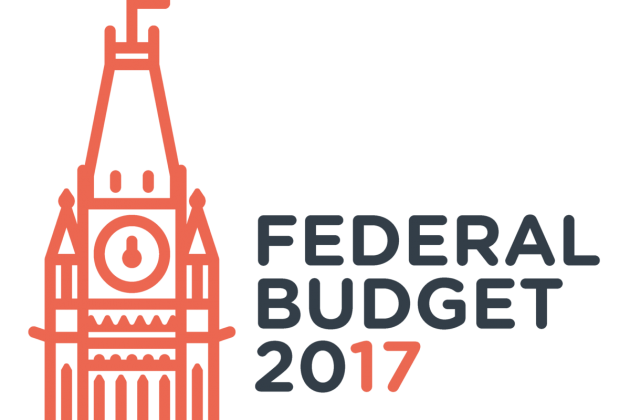
A Gender Based Analysis should result in financial commitments to women’s health, development assistance and economic drivers such as a childcare. While a few notable pieces were present, overall the budget fails urgent needs.
In 1995, Canada committed to the UN Beijing Platform for Action – a commitment requiring the government to conduct fulsome Gender Based Analysis (GBA) of all public spending. Twenty-two years later, the government has conducted its first GBA of the federal budget. It is a good first step but needs to be used in a way that prioritizes how spending should be allocated to promote gender equity. Something this budget still lacks.
GBA exposes all the ways that collecting and spending taxes is never gender neutral. If the government spends money on subsidized housing, for example, we can use GBA to know exactly how many women benefit from every dollar spent and how. It uncovers how any single program implementation increases or corrects growing gender inequality.
Because Action Canada for Sexual Health and Rights’ budgetary requests around sexual and reproductive health and rights disproportionality and positively affect women, we’ve put together a quick review of Canada’s 2017 “Women’s Budget:” what’s good, what’s getting there, and what’s still lacking.
GOOD
LGBTQ2 Secretariat
Budget 2017 commits $3.6 million over three years to establish an LGBTQ2 Secretariat to support the Prime Minister’s Special Advisor on LGBTQ2 issues. This is a first step towards earmarking future spending that will meet the needs of healthy, thriving queer, trans, intersex and 2 Spirit individuals and communities.
GETTING THERE
National Strategy to Address Gender Based Violence
Taking steps to establish a National Strategy to Address Gender Based-Violence is worth applauding; however, $100.9 million over five years is simply not enough. Violence against women in Canada affects far too many women and their families and is estimated to cost $12 Billion dollars every year. The systemic enablers of violence, such as a lack of affordable housing, have gone untreated and ignored for so long that gender-based violence is regarded as an ongoing crisis, particularly for Indigenous women. Any National Strategy must carry with it the potential to correct years of chronic underfunding. Intersectional anti-violence against women’s organizations and service providers are already warning that $100.9 million falls short.
Childcare
Childcare got a budget line this year but the commitment falls short of what is needed to create meaningful change. Budget 2017 commits $7 Billion dollars over 10 years to build an accessible, affordable childcare system in Canada but Canada is among the worst OECD countries when it comes to childcare costs and on average, Canadian parents are spending one quarter of their income on childcare. The federal budget allocation is too small in the first years to finance any serious improvement to access, affordability or quality care. Universal affordable childcare is a commitment to reproductive justice that we need to see in Canada.
LACKING
Official Development Assistance
One of the greatest disappointments in this year’s federal budget is in the complete lack of increase for Canada’s Official Development Assistance. Canada is obligated to meet a global target of 0.7% GNI for development aid and is lagging far behind other OECD countries and G7 partners. In a climate of instability heightened by Donald Trump’s reinstatement of the Global Gag Rule and mass deportations, it is increasingly important that Canada meet its promise to lead in the fight against global inequality. Canada’s recent announcement of $650 million towards Sexual and Reproductive Health and Rights is worth commending but it is deeply concerning that budget 2017 includes no funding for overall development assistance.
Abortion Access
Canada’s Health Minister has recognized that unequal access to abortion is a major problem in Canada; yet, budget 2017 does nothing to try and fix the problem. If this government is serious about committing to a feminist future that includes sexual and reproductive health, both strategy and funding must be allocated in areas where inequality persists.
Without cost-coverage, there is no choice. Health Canada recently approved the gold standard abortion pill (Mifegymiso) for use in Canada. The drug has the potential to dramatically increase access to abortion throughout under-serviced regions but its roughly $400 price tag means it is out of reach for many.
Sex Work
Following the 2015 federal election, the Trudeau government agreed that the Protection of Communities and Exploited Persons Act (PECA) is a problematic piece of legislation that does not meet the Charter Rights set out by the Supreme Court of Canada. Since then however, the government has taken no steps to repeal this Act, which puts the health and lives of sex workers at risk.
In addition to a repeal, dedicated funding for meaningful engagement of sex worker rights, advocates and organizations to support their efforts to advocate towards sex work law reform is needed.
National Pharmacare Strategy
The absence of federal leadership and resources invested in health creates inequalities and poor outcomes in the areas of reproductive health care across the country. Incidents of sexually transmitted infections (STIs) are on the rise while barriers to abortion and contraception remain across remote and rural regions.
Canada is the only country with public health care and no national drug cost-coverage plan. A National Pharmacare Strategy would guarantee access to a comprehensive range of medication, devices and appropriate supports that are critical to the full realization of people’s sexual and reproductive rights.